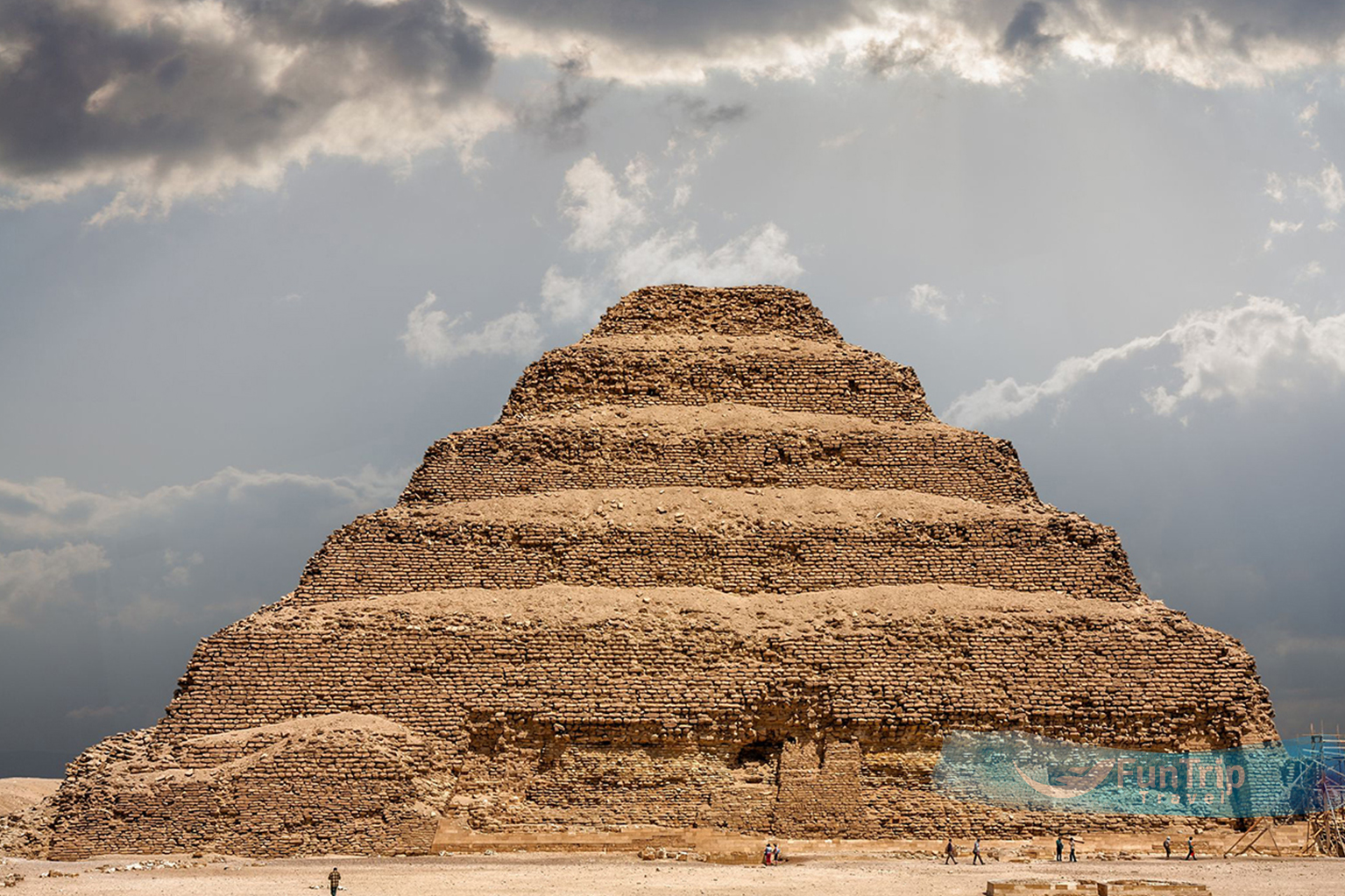Giza, an Egyptian neighborhood, stretches along the Nile’s western shore in Cairo. While the neighborhood as a whole is rather unremarkable, the UNESCO-recognized Giza Pyramids date back 4,500 years and are located there. The Great Pyramid of Khufu, the Pyramids of Khafre and Menkaure, and the Great Sphinx (among other artifacts) dominate the Giza Plateau and are the primary attractions in this area. Upon its completion, the Grand Egyptian Museum will house a collection of 100,000 antiquities, including some of Tutankhamun’s riches, which can be seen nearby.
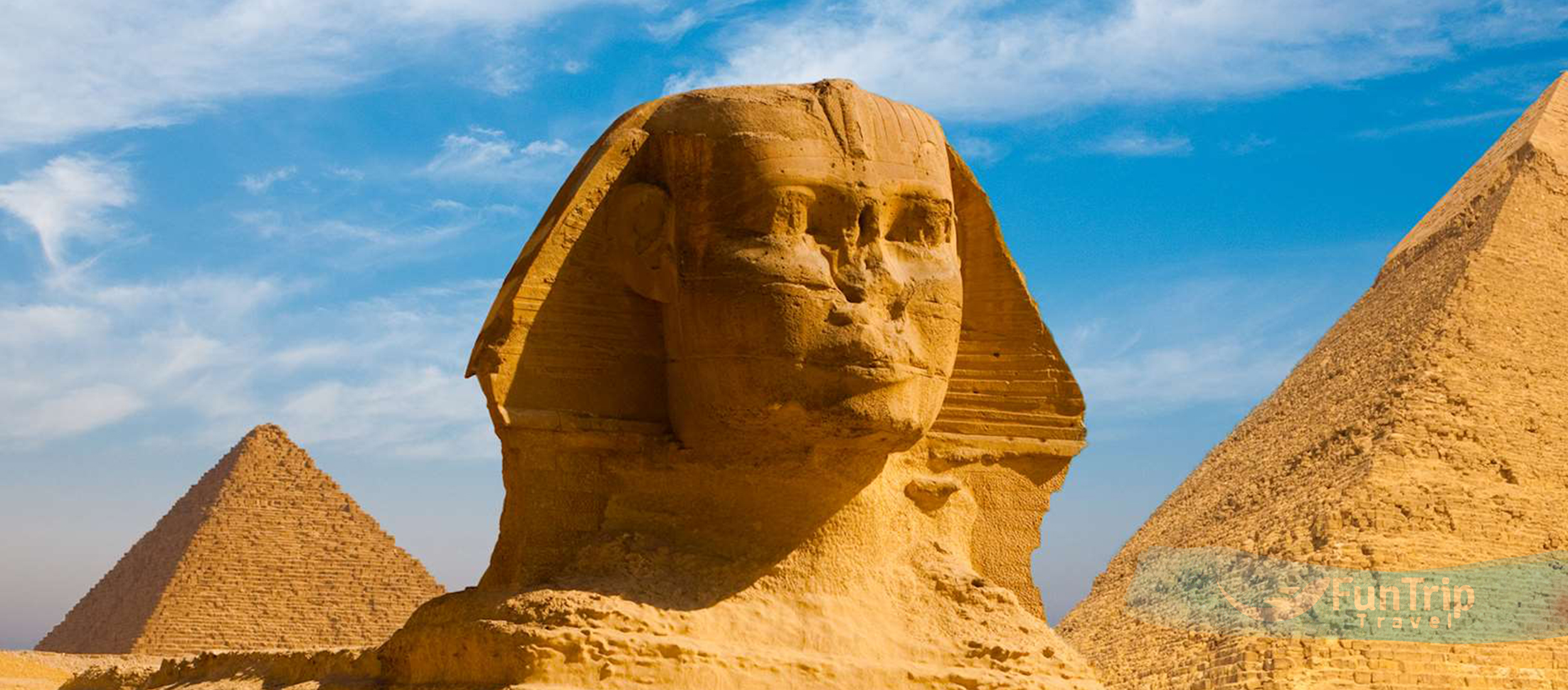
EXPLORE. CONNECT. CREATE MEMORIES
Giza Pyramids
Located on the Giza Plateau, they have awed visitors for centuries and remain one of Egypt’s major highlights. Despite the heat, dust, and tourist crowds, this is a must-see destination. The Pyramid of Cheops (also known as the Great Pyramid or the Pyramid of Khufu) is the largest of the Giza pyramids, and its interior of narrow passages can be explored.The Pyramid of Chephren, also called the Pyramid of Khefre, is south of the Great Pyramids. It can be entered through a tunnel, as can the smaller Pyramid of Mycerinus, also called the Pyramid of Menkaure. The Sphinx, a famous ancient structure with the body of a lion and the face of a pharaoh, watches over these tombs. The Valley Temple Of King Chephren In 1860, August Marriatte found several royal sculptures in Khafar’s valley sanctuary, which was made of granite. Among these was a spectacular, massive sitting statue of the King with the Horus falcon encircling the back of his head, considered one of the greatest works of old kingdom sculpture.
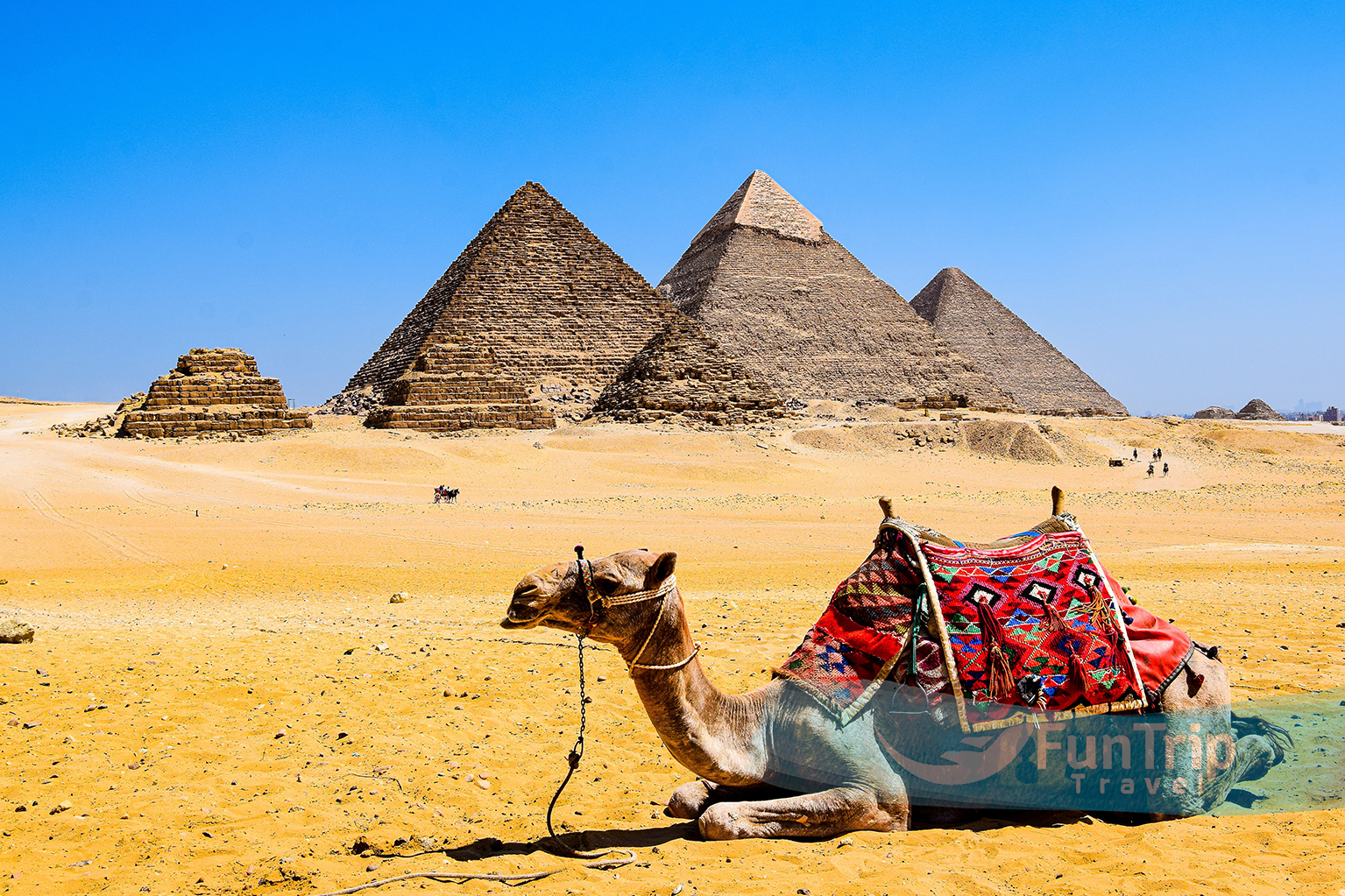
The Great Sphinx of Giza
Is a limestone statue of a reclining sphinx in Giza, Egypt. It is believed to have been built during the reign of King Khafre (c. 2575–c. 2465 BCE) and represents his visage. It is one of Egypt’s most well-known sites and, possibly, the best-known example of sphinx sculpture. The Great Sphinx is one of the world’s largest sculptures, at 240 feet (73 metres) tall and 66 feet (20 metres) long. The design combines a lion’s body and a human head with a royal crown. The statue was carved from a single block of limestone, and pigment residue shows that the entire Great Sphinx was painted. Some estimates suggest that it would have taken roughly three years for 100 workers to complete the statue with stone hammers and copper chisels. The Great Sphinx was most likely owned by Khafre during the 4th dynasty, according to academics. Some speculate that it was built by Khafre’s older brother Redjedef (Djedefre) to honour their father, Khufu, whose pyramid at Giza is known as the Great Pyramid. According to these scholars, the face of the Great Sphinx resembles Khufu more than Khafre, and this discovery has led to speculation that Khufu created the statue himself. Since the reign of Thutmose IV (1400–1390 BCE), efforts have been made to maintain the Great Sphinx statue, which has deteriorated with time. The torso has sustained the most erosion, while the face has also suffered damage, including the loss of a nose. Some believe Napoleon’s men used a gun to create the damage. However, pre-Napoleonic drawings show a sphinx without a nose. According to one story, Sufi Muslim Muhammad Sa’im al-Dahr mutilated the monument in the 14th century to protest idolatry.
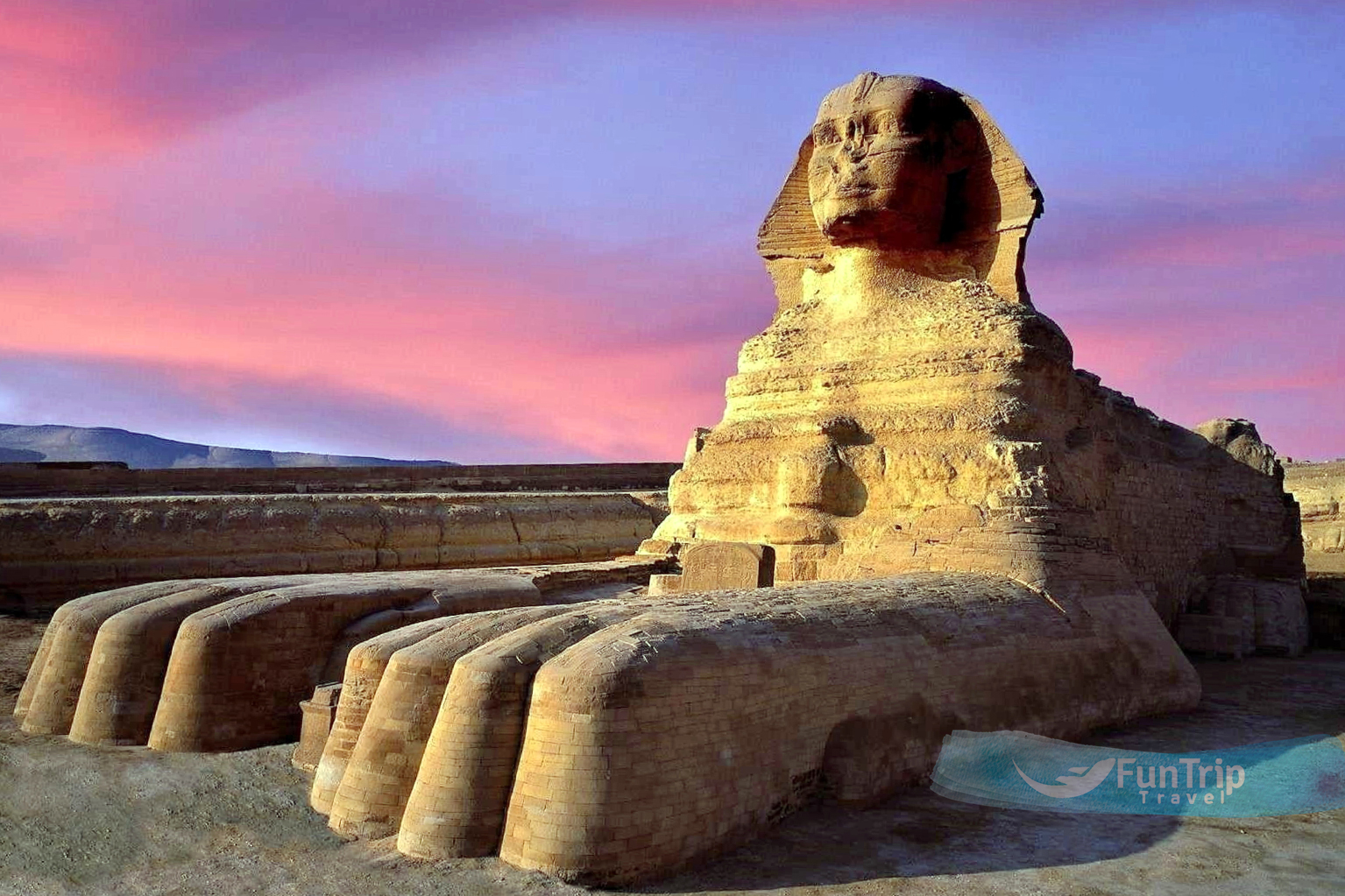
The Valley Temple Of King Khafre
In 1860, August Marriatte found several royal sculptures in Khafar’s valley sanctuary, which was made of granite. Among these was a spectacular, massive sitting statue of the King with the Horus falcon encircling the back of his head, considered one of the greatest works of old kingdom sculpture.
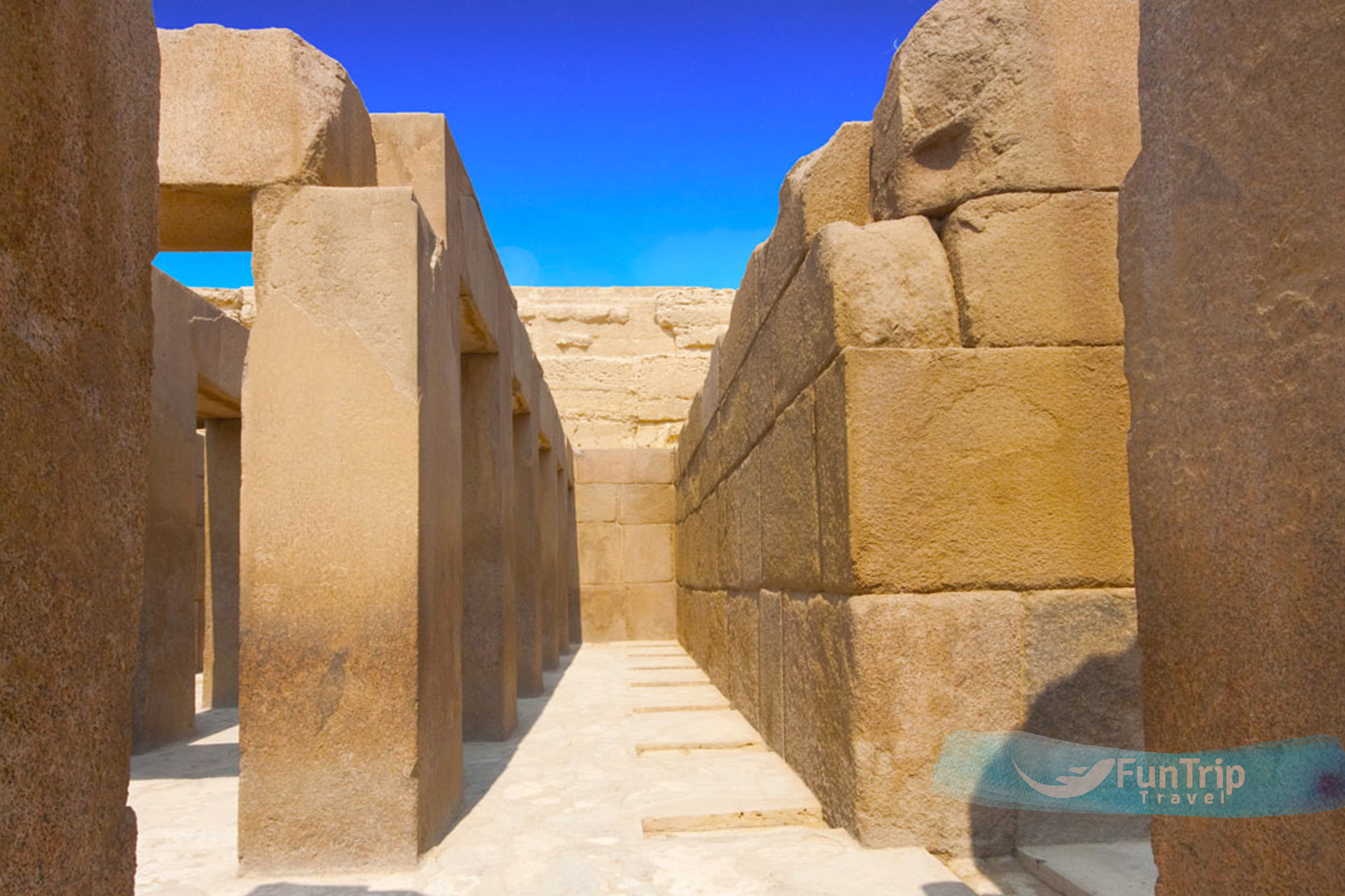
The Mastaba (TOMB) Of Idu
Located to the north of the much earlier mastaba of prince Kawab and to the east of the mausoleum of Qar is the grave of Idu (G 7102 in the Eastern cemetery). The tomb’s stonework is mostly gone, with only a few fragments still visible above ground. The statue-filled alcove on the west side of Idu’s altar is truly unique. A half-length, involved figure of Idu, whose hands are stretched forward to accept gifts, forms the lower part of the fake entrance. On the floor in front of him, loved ones of the departed laid out a gift table with food and drink to nourish the dead’s spirit.
The ancient Egyptian belief that the spirits of the dead came through a fake entrance from the afterlife to the present world to eat is thus symbolized by Idu’s monument. The ampleness of Idu’s body, including his potbelly and ample bosoms, is taken as a symbol of his success and riches. time period roughly corresponding to the 6th Dynasty of the Old Kingdom (2345–2181 B.C.).
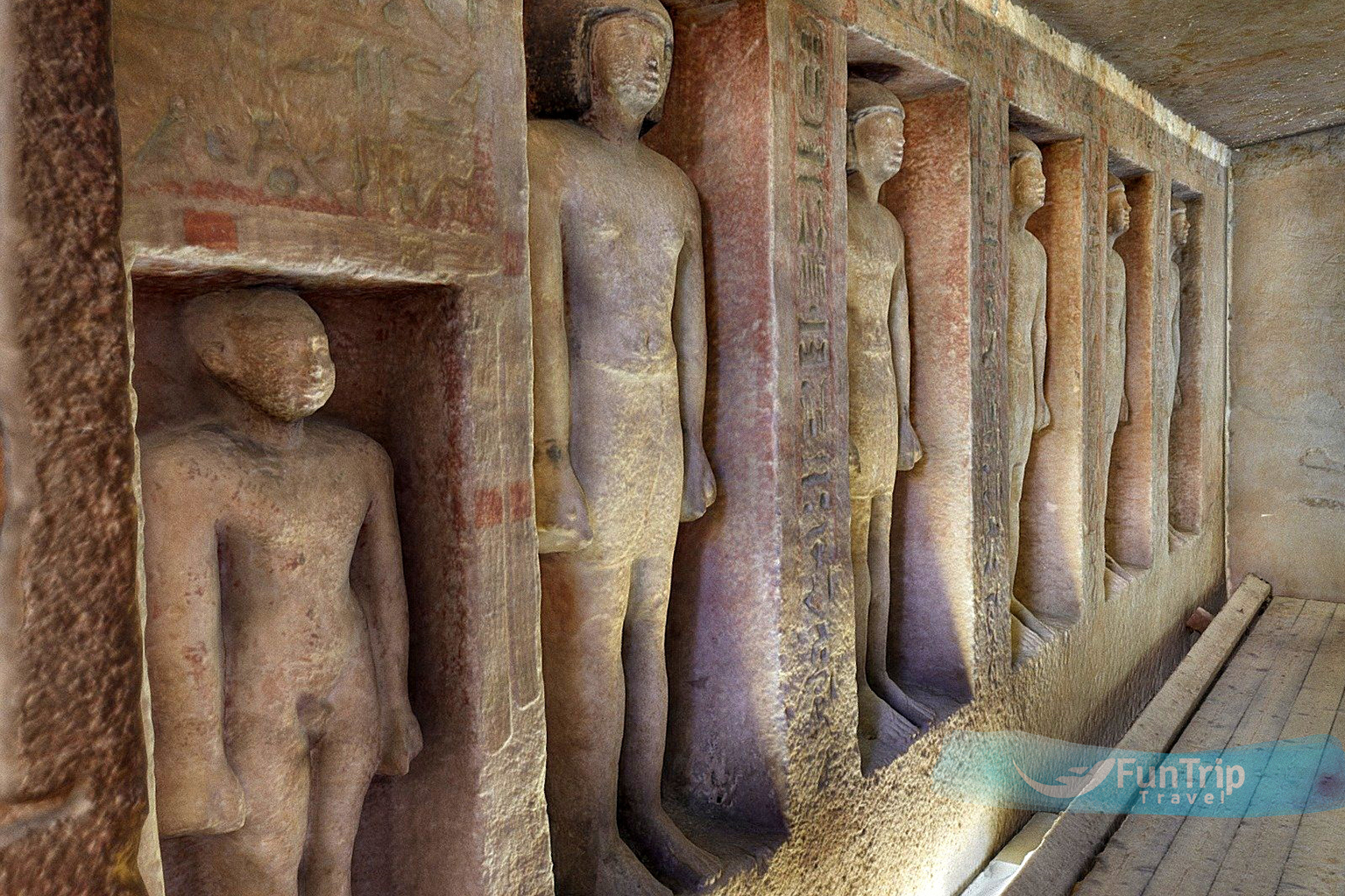
The Tomb Of Qar
Named after the cartouched name of Pepy I, King of Upper and Lower Egypt, Meryre, Qar is the “beautiful name” (what we would call a moniker) of an individual whose given name was Meryrenefer. (beautiful, good, perfect, etc.). It is not uncommon for a regal cartouche to be included in a name at this period. Since a funeral minister (like Qar) can serve as a living picture of the monarch he enshrines, this suggests that the mausoleum is not older than the king in question. One hundred meters from Cheops’s eastern face, in the vast east graveyard that surrounds his pyramid, is where you’ll find the monument of Qar.
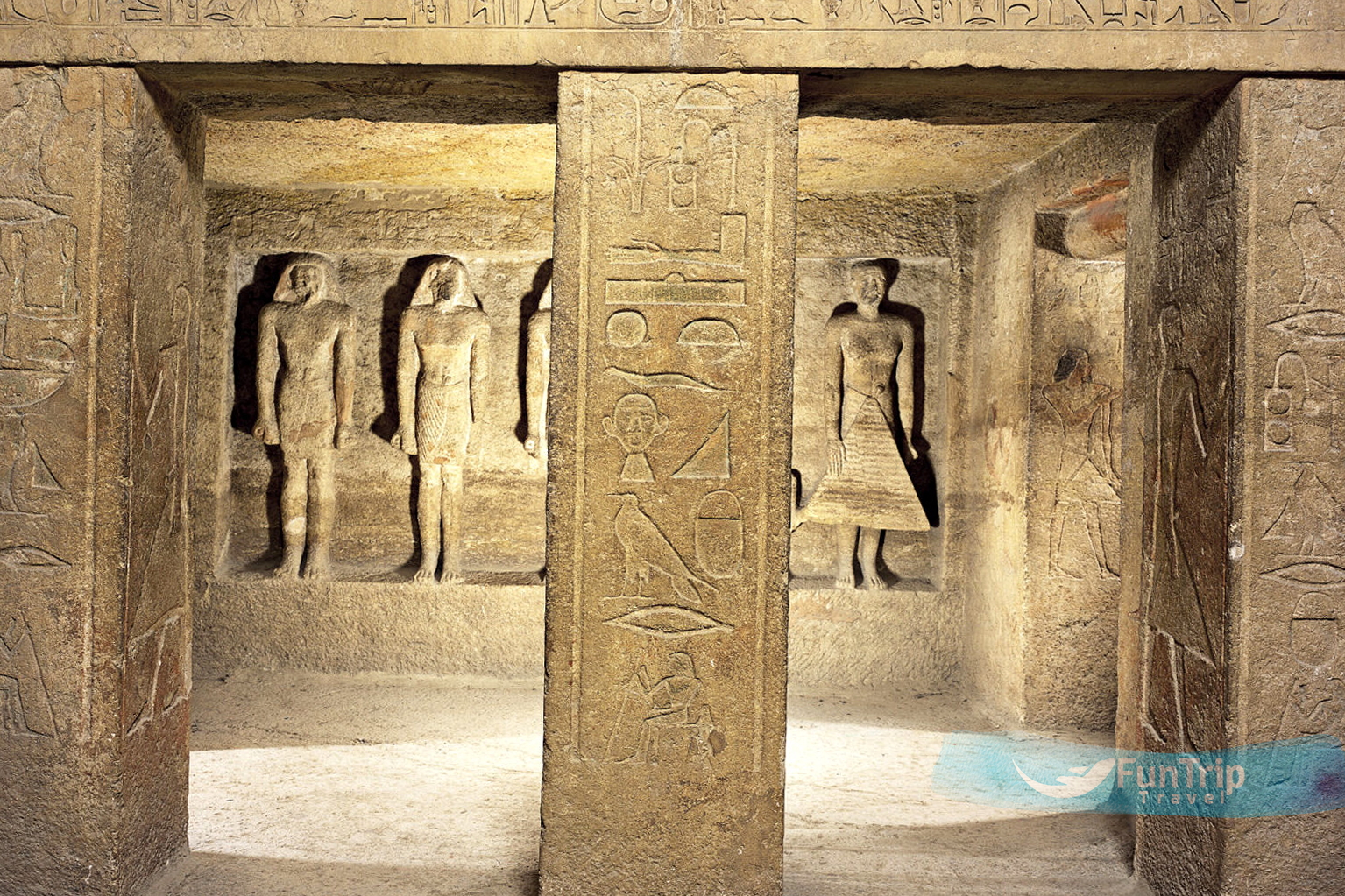
The Pyramid Of Queen Hetepheres I
A lady was the driving force behind the achievements of the pyramid architects like Snefru and Khufu. She owned a beautiful mausoleum stocked with priceless artifacts, making her one of the most powerful ladies of the Old Kingdom (around 2686 BC to 2181 BC). Queen Hetepheres I was the mother of Pharaoh Khufu, the grandmother of Pharaohs Djedefre and Khafre, and a consort of the Egyptian king Snefru (reign: 2613–2589 BCE). In addition to being known as “the King’s Mother” and “the Mother of the Dual King,” the first pyramid was built in honor of Queen “Hetepheres,” who was King Khufu’s mother. Since a well was found for burial next to the pyramid, in which the contents of the tomb of Queen Hetepheres were found, and that was why the pyramid was attributed to it, and that King Khufu may have prepared it to bury his mother after he learned of the news of the opening of her tomb after her death, so he transferred the contents of the tomb to that well, and that he built that pyramid to be dedicated to it There are 45-meter-long sides on this pyramid’s hexagonal foundation. The entryway to this and all other pyramids is located in the north, and the pyramid was constructed at an inclination of 51 degrees.
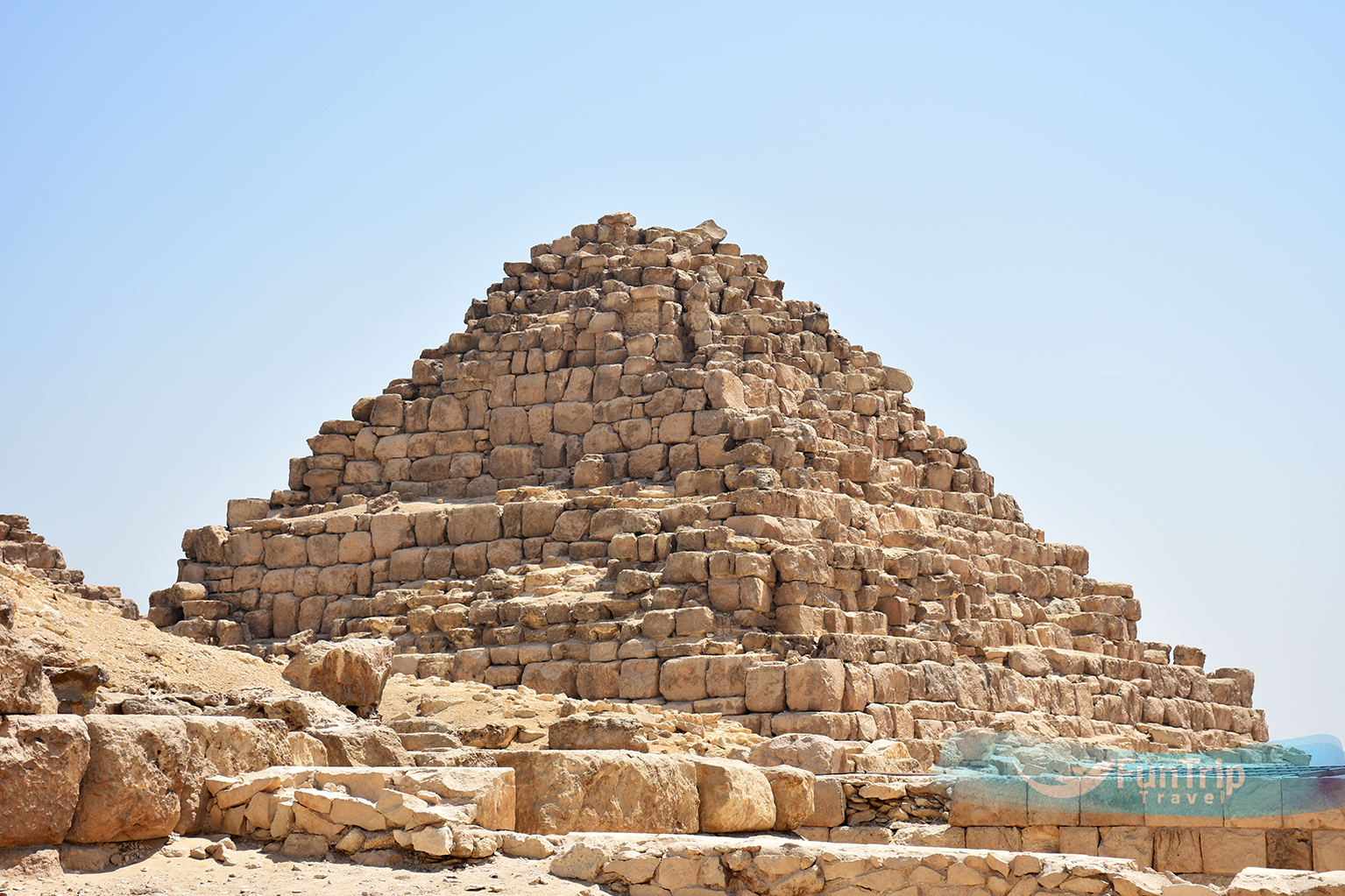
The Tomb Of Queen Meresankh III
The mastaba of Khafra’s wife and Khufu’s grandchild, Queen Meresankh III, can be found beneath the Great Pyramid. This monument is big and well-decorated, like it should be for a lady of her status. It also has the best-preserved wall reliefs in the Eastern Cemetery, which is a bonus. Bread baking, beer fermentation, fowling, grazing, carpet making, metal refining, and figure modeling are just some of the activities depicted on these, which appear to have been done by Meresankh herself. These, along with the detailed pictures of people bringing different kinds of gifts to Meresankh, were meant to make it so that her spirit would always have food and goods in the future. A cot is being made up under a cover, and other items, including a settee and a rolling chair, are being carried to her. Similar items were found in the tomb of Kufu’s mother, Hetepheres I, and are now on display at the Egyptian Museum in Cairo. The ten huge sculptures of women that are carved into the north wall of Meresankh’s burial chapel are some of the most interesting parts of the building. People usually think that they represent not only Meresankh, but also her mother and her children. Mother Hetepheres II ordered that Meresankh III’s tomb and coffin be made out of black basalt.Scientists have concluded that the monarch has bilateral silent sinus syndrome. George Reinser, an archaeologist, found the tomb in 1927. He claims to have found the oldest canopic vessels, which the Ancient Egyptians used to store the corpse’s insides for the future.
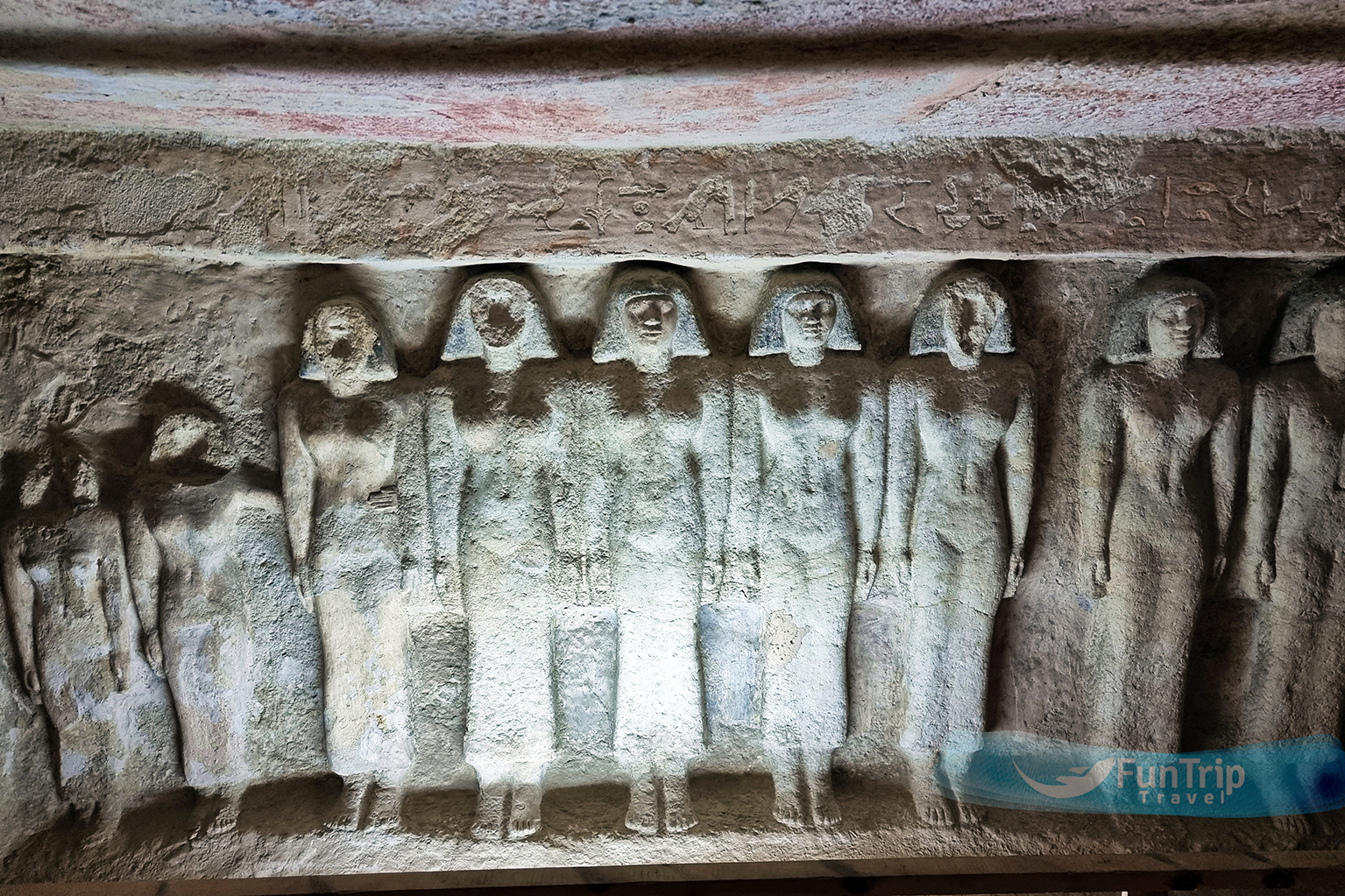
The Great Egyptian Museum (GEM)
For over a century, the Pyramids and the Egyptian Museum have been roughly a 45-minute drive apart, with the Pyramids on the Giza Plateau to the west of the city at the edge of the Sahara Desert and the ancient museum near Tahrir Square in downtown Cairo. The new Grand Egyptian Museum, on the other hand, will be positioned just two kilometres from the Pyramids. When it opens to the public in mid-2024 (estimated), it will be the world’s largest archaeological museum complex, housing over 100,000 artefacts. For the first time, King Tut’s whole treasure collection will be on exhibit, among artefacts from prehistoric times, Egypt’s many thousands of years of pharaonic culture, and the [comparatively] more modern ancient Greek and Roman periods of Egyptian history.
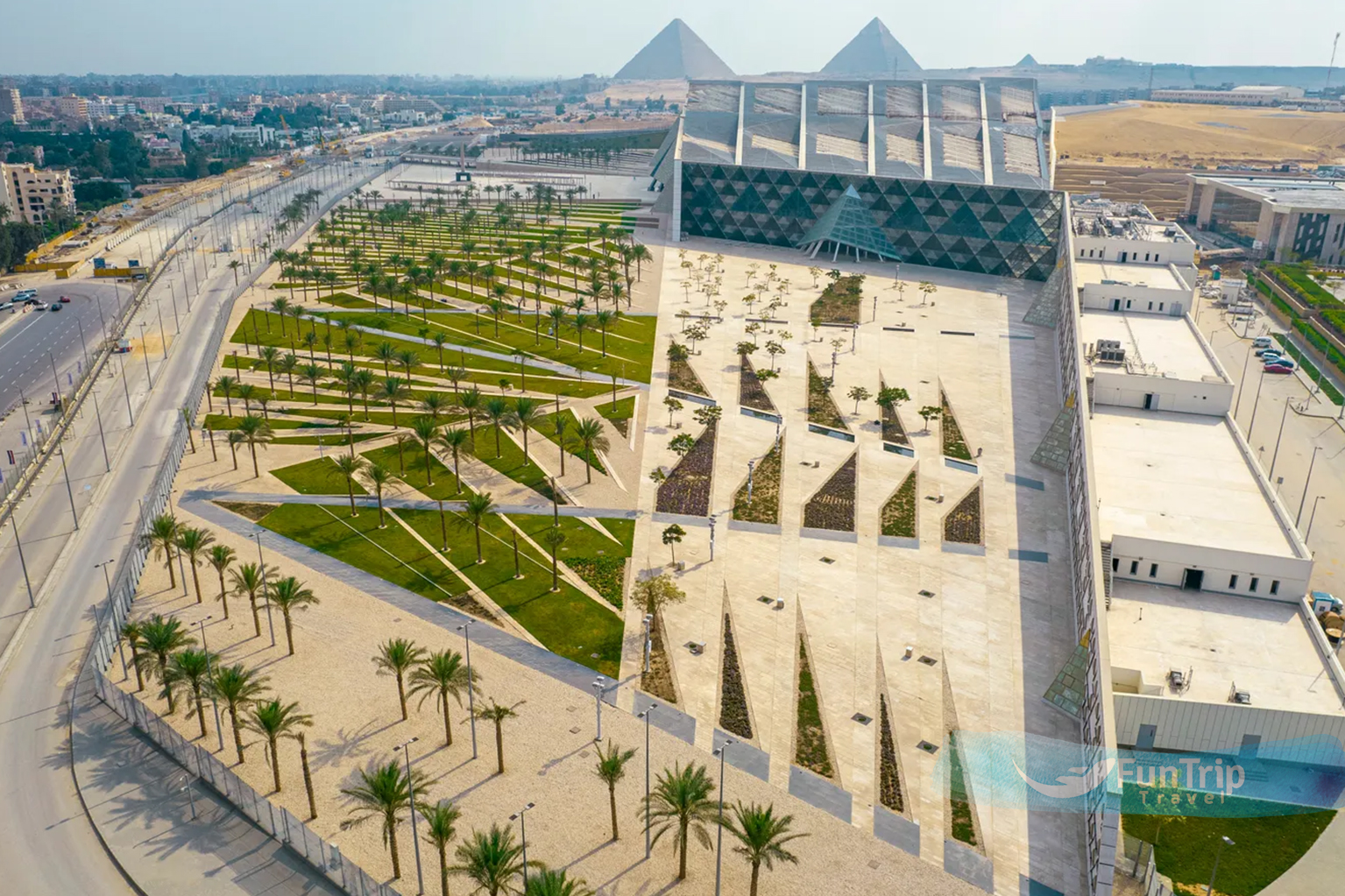
Exploring Dahshur and Saqqara
The “other pyramids” are located in the vast necropolis of Saqqara and the nearby site of Dahshur, and a day trip out here is just as rewarding as a trip to Giza’s pyramids. The locations are about 30 kilometers south of Cairo. The Step Pyramid is the most popular tourist attraction in Saqqara, but the entire area is littered with beautifully painted tombs worth spending a few hours exploring. Not to be missed are the Serapeum, where the mummies of the sacred Apis bulls were interred, and the Mastaba of Ti, with its colorful and intricately painted walls. Because Saqqara is so large and has such a long history as a burial site, excavations here continue to yield discoveries that make international headlines. Dahshur’s Red Pyramid and Bent Pyramid are just down the road and should not be missed. Even the shortest itinerary here will take at least a half-day.
